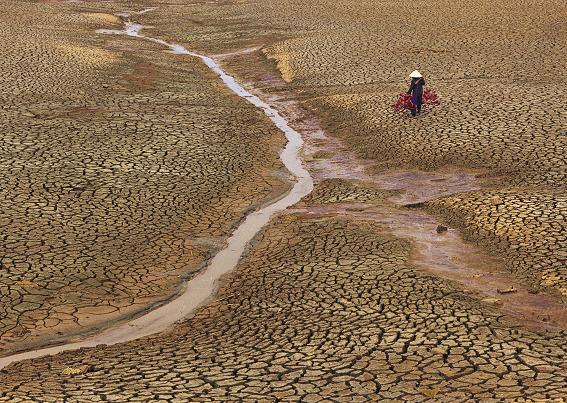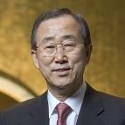The need for climate action
The time to act on climate change is now. We can no longer consider the issues relating to climate change as primarily environmental. Quite simply, climate action has become a matter of strategic consequence, a core political issue for every government on Earth.

Another day, another weather disaster. In November it was Mexico’s Tabasco state, swamped by floods, all crops ruined and more than 2 million people directly affected. Next month, who knows? Only one thing is for certain, climate change is posing challenges that we have yet to adequately address.
One day, we learn that the Arctic Ocean may be free of ice by 2050, that cyclones are forming ever further north in the Indian Ocean, and that Caribbean islands long deemed by Lloyds of London to lie outside the Caribbean hurricane belt are under increasing threat. The next we hear that world leaders meeting in New York have pledged their best efforts to tackle climate change.
The two faces of the climate issue
These are the two faces of what has now become a defining issue of our era. On the one hand, we have worsening cases of extreme weather, accompanied by scientific evidence that humankind is the cause. On the other, clear signs that the world is waking up to the scale of the problem.
In September this year, I called a high-level meeting on climate change at the United Nations. I wanted to spur conversation and get global policy-makers together to make common cause in finding solutions to a common problem. In this, we succeeded beyond expectation. Certain words ran like a thread through our discussions: “urgency,” “action” and “now.”
It was the largest such meeting ever held, with more than 80 heads of state. I sensed something remarkable happening, something transformative—a sea-change, whereby leaders showed themselves willing to put aside blame for the past and pose to themselves more forward-looking questions: “Where do we go from here?” “What can we do, together, in the future?” President Michelle Bachelet of Chile put it bluntly, likening our fragile planet to an island in the universe. “We can destroy it,” she said, “or save it.”
The bad news
S
In Chile I also saw how glaciers are rapidly melting, just as they are in all the world’s frozen regions. Such melting will mean severe shortages of water for half a billion people in South Asia. Much of northern China may become desert. Seeing the rapidly calving ice also made me recall the words of Micronesia’s delegate at the September climate meeting, when he worried openly about his country sinking beneath the rising seas. “How do we explain to our people, to future generations, that we have nothing for them?” he asked, meaning it literally.
The good news
But there was good news on my trip, too. In Brazil I learned that the country has reduced deforestation in the Amazon basin by 50 per cent. This is a trend we need to see reflected in all the major forested regions of the tropics—with international support where necessary.
The good news does not stop there. India—one of the world’s most rapidly advancing economies—is devoting 2 per cent of GDP annually to flood control and food security programmes, as well as mandating tough energy efficiency standards. China, too is promoting cleaner and more resource-efficient development. Meanwhile, California, a crucible for technological revolutions, is mobilizing—both politically and entrepreneurially—to fight climate change, and showing a lead that cities, states, businesses and communities are jostling to follow.
The need for climate action
All this sets the stage for an advance at the Bali climate change summit. We need a breakthrough—an agreement to launch negotiations for a comprehensive climate change deal that all nations can embrace. It will be difficult but I am optimistic. We are in a different place today than yesterday.
At the September high-level meeting in New York, the international community made a clear commitment to change. Governments will pursue their own solutions—from mandatory emissions controls to market mechanisms, such as carbon-trading, to new fuel efficiency technologies and conservation. This is as it should be; there are many paths to Rome. The important thing is that all agree that national policies should be coordinated within the United Nations, so that our work together is complementary and mutually reinforcing.
A political imperative
No less important is the shared sense of urgency. Henceforth, climate change will no longer be a primarily environmental concern. It has become a matter of strategic consequence, a core political issue for 
Understanding that addressing climate change is a political imperative represents a turning point, with enormous implications. As a political issue, climate change becomes closely linked to economic development and the achievement of the Millennium Development Goals.
The World Bank and UNDP will begin to explore ways of financing energy efficiency and anti-pollution programmes in developing countries. Trade and technology transfer incentives will be part of the equation. Wealthy nations must help provide incentives to poorer ones to take steps that help us all. For instance, UN member states are discussing an Adaptation Fund that supplements international aid with money for climate change projects that will benefit the whole world, not merely the countries that initiate them.
And this, again, is where I detect a tipping point. It has become abundantly clear that we are all in this together. Some countries are more vulnerable to climate change, and some are more responsible for the emissions that are driving it, but no community is immune from its effects. Furthermore, no-one lacks the ability to do something positive to prevent the situation getting worse.
Carbon neutral UN
Mindful of this, I have asked my senior executives throughout the UN system to make sure our own house is in order. In October, each Executive Head of a UN programme or agency committed, by the end of 2009, to take an inventory of their greenhouse gas emissions. They will start immediately to reduce emissions to the extent they can; and to assess the cost of offsetting the remainder via the purchase of Clean Development Mechanism credits.
The goal is to announce a target date for a carbon-neutral UN. In this we are not alone. This publication sets out a number of actions that organizations and governments can take—and in many cases are already taking—backed up by clear examples of how reducing greenhouse gas emissions can be achieved.
The trend for going carbon-neutral is growing. To facilitate its spread, the UN Environment Programme is establishing a Climate Neutral Network so businesses, governments, organizations and communities can pledge themselves to creating a carbon-neutral future, and share the important lessons and tools we will all need to achieve it.
Having committed myself when I was appointed Secretary-General to making climate change a priority, I am glad that I can approach the end of my first year with a sense of optimism. As one environmental expert noted at the high-level meeting in September: “curbing climate change may not be as hard as it looks.’’ With political will, he suggested, comes results. Our job is to translate this spirit into deeds in Bali—and beyond.







_-_frame_at_0m5s_400_250_80_s_c1.jpg)

